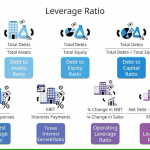Short selling has long been a controversial yet intriguing investment strategy in the world of finance. At its core, short selling is a technique where an investor borrows shares of a stock and sells them, with the intention of buying them back at a lower price in the future. This allows the investor to profit from the stock’s decline, rather than its rise, which is the traditional approach in investing.
The process of short selling begins with the investor identifying a stock that they believe is overvalued or poised for a downward correction. They then borrow the shares from a broker, typically by using a margin account, and sell them at the current market price. The investor’s goal is to wait for the stock’s price to drop, at which point they can buy back the shares at a lower price, return them to the lender, and pocket the difference as profit.
This strategy, while potentially lucrative, comes with its own set of risks and ethical considerations. Short sellers must navigate a delicate balance between identifying genuine market opportunities and avoiding activities that could be perceived as market manipulation or unethical behavior.
The Basics of Short Selling
To fully understand the art of short selling, it’s important to delve into the mechanics of the process. When an investor decides to short a stock, they are essentially taking a bearish stance on the company’s future performance. This means that they are betting against the stock’s price appreciation and expecting it to decline.
The first step in short selling is to borrow the shares from a broker or other lender. This is typically done through a margin account, which allows the investor to access a pool of borrowed shares. The investor then sells the borrowed shares at the current market price, with the intention of buying them back at a lower price in the future.
The key to successful short selling is timing the market correctly. Investors must closely monitor the stock’s price movements and be prepared to act quickly when the opportunity arises. This requires a deep understanding of market trends, technical analysis, and the factors that can influence a stock’s price.
One of the primary risks associated with short selling is the potential for unlimited losses. Unlike traditional long positions, where the maximum loss is the amount invested, short sellers can theoretically lose an unlimited amount if the stock’s price continues to rise. This is known as the “short squeeze” and can be a significant challenge for short sellers to navigate.
Short Selling Strategies
Short sellers employ a variety of strategies to identify and capitalize on potential market opportunities. These strategies range from technical analysis to event-driven trading, each with its own unique approach and set of considerations.
One common strategy is to use technical analysis to identify stocks that are overbought or exhibiting bearish chart patterns. Short sellers may look for indicators such as negative divergences, head and shoulders patterns, or other technical signals that suggest a potential downward trend. By timing their short positions carefully, they can seek to profit from the stock’s decline.
Fundamental analysis is another approach used by short sellers. They may examine a company’s financial statements, industry dynamics, and competitive landscape to identify potential weaknesses or overvaluation. Short sellers may target companies with questionable accounting practices, unsustainable business models, or other fundamental flaws that could lead to a decline in the stock’s price.
Event-driven trading is another popular short selling strategy. Short sellers may seek to capitalize on specific events or announcements that could negatively impact a company’s stock price, such as earnings misses, regulatory changes, or product failures. By timing their short positions around these events, they can potentially profit from the resulting market reaction.
Regardless of the specific strategy employed, successful short sellers must possess a deep understanding of the market, a keen eye for detail, and the discipline to manage the inherent risks associated with this investment approach.
Understanding the Risks of Short Selling
While short selling can be a lucrative investment strategy, it also comes with a unique set of risks that investors must be aware of. One of the primary risks is the potential for unlimited losses, as mentioned earlier. If the stock’s price continues to rise, the short seller’s losses can quickly escalate, potentially leading to significant financial consequences.
Another risk is the possibility of a short squeeze, where a sudden and significant increase in the stock’s price forces short sellers to cover their positions by buying back the shares at higher prices. This can create a domino effect, as the increased demand for the stock drives the price even higher, further exacerbating the short sellers’ losses.
Regulatory risks are also a concern for short sellers. Governments and regulatory bodies may impose restrictions or bans on short selling, particularly during times of market volatility or financial instability. These regulatory changes can catch short sellers off guard and lead to unexpected losses.
Additionally, short sellers must be mindful of the potential for market manipulation. Critics of short selling argue that the practice can be used to artificially depress a stock’s price, which can have negative consequences for the company and its shareholders. This has led to increased scrutiny and regulation of short selling activities in many jurisdictions.
To mitigate these risks, short sellers must employ robust risk management strategies, such as setting strict stop-loss orders, diversifying their portfolios, and maintaining a deep understanding of the market and the companies they are targeting. Proper due diligence and a disciplined approach are essential for successful short selling.
Ethical Considerations in Short Selling
The practice of short selling has long been a subject of ethical debate within the financial community. While some view it as a legitimate investment strategy that helps to maintain market efficiency, others argue that it can be used to manipulate the market and unfairly target companies.
One of the primary ethical concerns surrounding short selling is the potential for market manipulation. Short sellers may engage in activities such as spreading false or misleading information about a company in order to drive down its stock price, a practice known as “short and distort.” This can have devastating consequences for the company and its shareholders, as well as the broader market.

Another ethical consideration is the impact of short selling on the companies being targeted. Short sellers may take actions that can harm the company’s reputation, such as publicly criticizing its management or business model. This can make it more difficult for the company to raise capital, secure funding, or attract and retain talented employees, ultimately undermining its long-term viability.
Critics of short selling also argue that it can contribute to market instability and volatility, as the actions of short sellers can amplify downward price movements and create a self-fulfilling prophecy of declining stock prices. This can have ripple effects throughout the broader market, affecting the investments and financial security of a wide range of stakeholders.
However, proponents of short selling argue that it serves an important function in the financial markets by identifying and correcting overvalued stocks, which can help to maintain market efficiency and prevent asset bubbles. They also contend that short selling can provide valuable information to investors and regulators about potential risks and vulnerabilities in the market.
Ultimately, the ethical considerations surrounding short selling are complex and nuanced. While there are valid concerns about the potential for abuse and market manipulation, there is also a recognition that short selling can play a constructive role in the financial markets when practiced responsibly and with a focus on transparency and accountability.
Short Selling vs. Long-Term Investing
When it comes to investment strategies, short selling and long-term investing are often viewed as opposing approaches. While short sellers seek to profit from the decline in a stock’s price, long-term investors typically aim to generate returns through the appreciation of a company’s value over time.
One key difference between the two approaches is the time horizon. Short sellers are typically focused on the short-term, looking to capitalize on market fluctuations and take advantage of temporary price movements. In contrast, long-term investors take a more patient and disciplined approach, often holding onto their investments for years or even decades.
Another distinction is the underlying motivation. Short sellers are primarily driven by the potential for financial gain, seeking to identify overvalued stocks and profit from their decline. Long-term investors, on the other hand, are often more concerned with the long-term viability and growth potential of the companies they invest in, focusing on factors such as management, competitive positioning, and industry trends.
Despite these differences, there are also some similarities between short selling and long-term investing. Both approaches require a deep understanding of the market, a keen eye for detail, and the ability to make informed decisions based on thorough research and analysis. Additionally, both strategies can involve elements of risk management, as investors in either approach must be mindful of the potential for unexpected market events or changes in the underlying fundamentals of the companies they are invested in.
Ultimately, the choice between short selling and long-term investing will depend on an individual investor’s risk tolerance, investment goals, and overall market outlook. While short selling can be a lucrative strategy for some, it is not without its risks and ethical considerations. Long-term investing, on the other hand, can offer more stability and the potential for sustained growth, but may require a greater degree of patience and discipline.
Famous Short Sellers and Their Methodologies
Throughout the history of financial markets, there have been a number of renowned short sellers who have made their mark through their ability to identify and capitalize on market opportunities. These individuals have often employed a combination of sophisticated analysis, strategic thinking, and a willingness to challenge conventional wisdom.
One of the most famous short sellers is Michael Burry, the protagonist of the book and film “The Big Short.” Burry, a former hedge fund manager, famously predicted the subprime mortgage crisis of the late 2000s and profited significantly from his bearish bets. His approach centered on a deep dive into the underlying fundamentals of the mortgage-backed securities market, identifying the inherent flaws and vulnerabilities that ultimately led to the crisis.
Another prominent short seller is Jim Chanos, the founder of Kynikos Associates. Chanos is known for his meticulous research and his willingness to take on high-profile targets, such as Enron and Tyco International. His methodology often involves a combination of forensic accounting, industry analysis, and a keen understanding of the broader macroeconomic trends that can impact a company’s performance.
Bill Ackman, the founder of Pershing Square Capital Management, is another notable short seller who has made a name for himself through his bold and often controversial bets. Ackman’s approach has often involved a mix of fundamental analysis, activist investing, and a willingness to publicly challenge the management of the companies he targets.
These short sellers, and others like them, have demonstrated that success in this investment strategy requires a unique blend of analytical skills, market insight, and a willingness to go against the grain. By carefully identifying and capitalizing on market inefficiencies, they have been able to generate significant returns for their investors and, in some cases, influence the broader direction of the financial markets.
Short Selling Regulations and Requirements
Given the potential for abuse and market manipulation, short selling is a highly regulated activity in most jurisdictions around the world. Regulators have implemented a range of rules and requirements to ensure that short selling is conducted in a fair and transparent manner, with the goal of protecting the integrity of the financial markets.
One of the key regulatory requirements for short selling is the need to borrow the shares before selling them short. This is known as the “locate” requirement, and it is designed to prevent the practice of “naked” short selling, where an investor sells shares they do not actually possess. Brokers are typically responsible for ensuring that their clients have located the shares they intend to sell short before executing the trade.
Another common regulatory requirement is the implementation of “uptick” rules, which limit the ability of short sellers to sell a stock when its price is declining. These rules are intended to prevent short sellers from exacerbating downward price movements and contributing to market volatility.
In addition to these specific rules, short sellers are also subject to the same reporting requirements and disclosure obligations as other investors. This includes the need to report large short positions, as well as any material changes in their short positions, to the relevant regulatory authorities.
Regulators have also introduced restrictions on short selling during times of market stress or financial instability. For example, in the wake of the 2008 financial crisis, several countries implemented temporary bans on short selling to help stabilize the markets and prevent further declines in stock prices.
While these regulations and requirements can add complexity and additional compliance obligations for short sellers, they are generally viewed as necessary measures to ensure the fairness and integrity of the financial markets. By striking a balance between the potential benefits of short selling and the need to mitigate the risks, regulators aim to create an environment that fosters responsible and transparent investment practices.
Tips for Successful Short Selling
For investors looking to engage in short selling, there are several key tips and best practices to consider:
- Conduct thorough research: Successful short selling requires a deep understanding of the company, its industry, and the broader market dynamics. Investors should carefully analyze the company’s financials, management, competitive positioning, and any potential catalysts that could impact the stock price.
- Manage risk effectively: Short selling carries the risk of unlimited losses, so it’s crucial to have a robust risk management strategy in place. This may include setting strict stop-loss orders, diversifying the portfolio, and carefully monitoring market conditions.
- Time the market carefully: Timing is everything in short selling. Investors must be able to identify the right moment to enter and exit a short position, taking into account factors such as market sentiment, technical indicators, and any potential catalysts that could trigger a stock’s decline.
- Stay disciplined: Short selling requires a high degree of discipline and emotional control. Investors must be able to resist the temptation to hold onto a losing position and should be prepared to cut their losses if the trade does not play out as expected.
- Comply with regulations: Short sellers must be aware of and comply with all relevant regulations and reporting requirements in the jurisdictions in which they operate. Failure to do so can result in significant legal and financial consequences. This is where financial advisors come into play.
- Maintain a long-term perspective: While short selling can be a lucrative strategy, it’s important to maintain a long-term perspective and not become overly focused on short-term market fluctuations. Successful short sellers often take a patient and disciplined approach to identify and capitalize on genuine market opportunities.
By following these tips and best practices, investors can increase their chances of success in the complex and often controversial world of short selling. However, it’s important to remember that short selling is not without its risks, and it should be approached with a high degree of caution and ethical consideration.
Conclusion
In the ever-evolving world of finance, short selling remains a complex and often controversial investment strategy. While it can be a lucrative approach for those who are able to identify and capitalize on market inefficiencies, it also comes with a unique set of risks and ethical considerations.
Through this exploration of the art of short selling, we have delved into the mechanics of the process, the various strategies employed by short sellers, and the potential risks and ethical dilemmas that arise from this practice. We have also examined the regulatory landscape and the efforts of governing bodies to strike a balance between the potential benefits of short selling and the need to maintain the integrity of the financial markets.
Ultimately, the decision to engage in short selling is a deeply personal one, requiring a thorough understanding of the market, a disciplined approach to risk management, and a keen awareness of the ethical implications of one’s actions. By approaching this investment strategy with a thoughtful and responsible mindset, investors can potentially unlock significant opportunities while also contributing to the overall health and stability of the financial ecosystem.
As the world of finance continues to evolve, the role of short selling is likely to remain a topic of ongoing debate and scrutiny. However, by staying informed, maintaining a commitment to ethical practices, and continuously refining their skills and strategies, short sellers can play a constructive role in the financial markets, helping to identify and correct market inefficiencies and contributing to the overall efficiency and resilience of the global economy.






